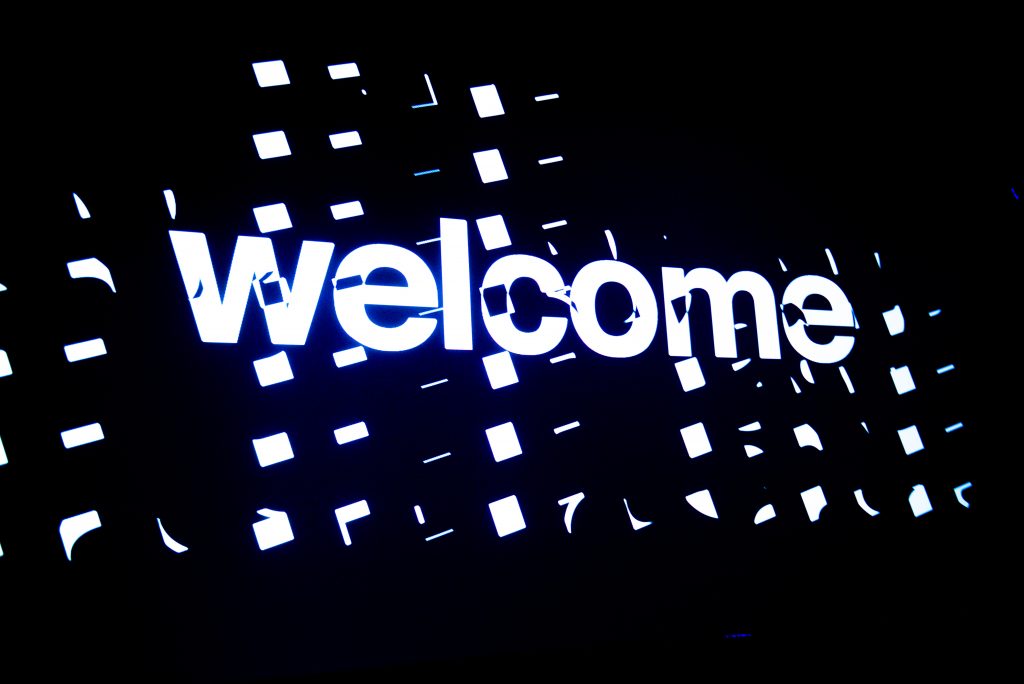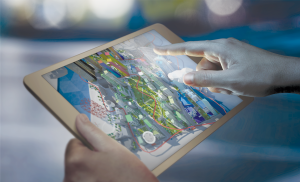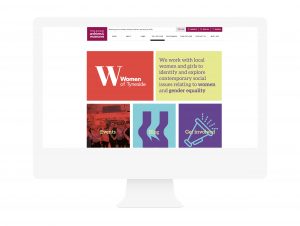
DBA Roundup
A roundup of industry expertise, exclusive resources, business support and tools for your design business.

Over the past few years, the team here at Nalla have benefited from attending a range of training courses offered by the DBA.
When searching for training for the team, one of the first things we look at is the facilitator or speaker. We have found that facilitators and speakers who have a strong background in the design industry are able to provide far more relevant training and advice. This has been a solid selling point for why we’ve opted for DBA training; the speakers use their industry knowledge to address the particular challenges faced by design agencies ensuring the sessions really meet the needs of our business and team.

It’s worth pulling out one training course example in particular to demonstrate the effect on our business. Last year, two members of our team attended a half-day DBA workshop on design effectiveness. This session outlined processes to measure effectiveness as well as case studies from past winners.
1. We embedded a culture of measurement into our processes. We ensure results are part of the very first conversation with clients. We translate this into the creative brief which is signed off by the client and guarantees alignment to tangible results and metrics at the start of every project. This has not only resulted in better ROI statistics but also ensured the client is aligned to objective results, not subjective.
2. We have also ensured that every conversation or presentation to potential clients shows our proven ROI. We use tailored language to demonstrate the effectiveness of design to give them confidence in our abilities and lower the perception of risk when choosing an agency.

The DBA training sessions have provided our team with practical actions rather than simply theoretical advice, and we are seeing greater engagement and results from our new business conversations, as well as team and company-wide improvements.
The DBA is an engaged and progressive community of design agencies and design-driven businesses. From benchmarking your rates and salaries against your peers’ with our annual salary survey report, access to our industry renowned training and events as well as expert advice and guidance, our extensive range of member benefits provides professional and practical support to help drive efficiencies, professionalism and results.
Images supplied by Nalla:
Edinburgh TV Festival
Waitrose Drinks Festival
Informa










The roundtable was initiated to support research by the All-Party Parliamentary Group for Design and Innovation, working alongside Design Business Association and Design and Technology Association, to investigate the decline in creative subject uptake amongst students and the effect that has on the future talent available. The research is being written into a report launching in Birmingham on 1 October to coincide with the Conservative Party Conference.
The conversation with members around the table covered multiple topics within the design education field, with a main focus on university. It was noted that there is a distinct disconnect between what is taught at university and college compared to what is needed by the industry. University degrees can lack the practical elements required for the commercial environment, from software skills through to commercial understanding and how to deliver to a brief within real world boundaries. The idea of client briefs, business goals and time constraint pressures seem to be missed within degree courses. An ability to articulate how a design conclusion was reached and a confidence to be questioned on the work is also an area that needs development.
The creative talent issue starts further back than university, with dramatic reductions in creative subject uptake having an effect on a host of different industries and disciplines. By removing the compulsory nature of Design & Technology from the early secondary school years, the future uptake of the subject reduces due to lack of awareness. However, the effects don’t stop there – manual dexterity, a skill required in many different industries from design through to medical, and emotional intelligence can be negatively influenced by reducing the exposure to creativity and the soft skills it breeds.
If those are the problems, what are the solutions? There were many ideas and options for the industry to influence the relevant stakeholders and make change. But, it is a deep subject that greatly affects the workspace of tomorrow, so more careful thought and research is needed before an action plan is formed.
Keep your eye out for more on this topic as we, your trade association, continue to work on ensuring the future of your workforce.
The DBA is an engaged and progressive community of design agencies and design-driven businesses. From benchmarking your rates and salaries against your peers’ with our annual salary survey report, as well as access to our industry renowned training and events and expert advice and guidance, our extensive range of member benefits provides professional and practical support to help drive efficiencies, professionalism and results.











Rufus Leonard are the Brand Experience Engineers. Ever since the founders, Neil and Darrel, started Rufus Leonard 29 years ago, they have been helping businesses create extraordinary experiences for their colleagues and their customers across all touchpoints. Their integrated offer enables them to design, build and fine-tune the engines of Extraordinary Brand Experience – Organisational Engagement, Brand Optimisation, Service Design & Build and Technology. Supporting brands like Lloyds Banking Group, British Gas, Reckitt Benckiser, Royal Mail, Stagecoach, BBC and Aggreko.
Within their scope of work, they have a large digital team that carry out qualifying R&D for tax credits. This includes, for example, projects around technical architecture and platform development and integration.
After their first meeting, the award-winning tax specialist ForrestBrown got to know DBA member Rufus Leonard’s business inside out, identifying both internal projects and client projects that clearly sought advances in technology to deliver successful outcomes.
In a 2016 survey commissioned by ForrestBrown, only 31% of respondents (UK business leaders) thought that internal projects could qualify for R&D tax credits. This is a misconception that could be losing innovative companies a fortune.
The qualifying internal projects at Rufus Leonard revolved around building digital infrastructures in which they could more efficiently undertake their QA process and make deployments; and developing frameworks for quickening the production of projects, for example, responsive websites.

And then there were the client projects, such as Rufus Leonard’s work with Stagecoach.
The aim was to create an online experience that incorporated mobile ticketing, real time information, personalisation, geo-location, time-tabling and much more – serving all of their 18 separate operating companies.
Part of the challenge of working on something so complicated is to make it easy to use – both front-end and back end. A 30% increase in revenue is proof of the success of the front-end usability, whilst Rufus Leonard were able to develop a back-end that is accessed through a single service layer.
The back-end task was huge and even though there were numerous off-the-shelf or previously developed components that fed into the solution, Rufus Leonard needed to integrate these with 50 different APIs. And where there were limitations in the existing technology, they had to develop bespoke solutions. A lot of this activity qualified for the R&D tax credit.
Digital innovation is so fast-moving that cutting-edge development quickly becomes the norm. ForrestBrown can look through past projects (going back approximately two years) and help companies identify past innovations that qualify.
“Our field had advanced so much in just the previous two years that looking back we felt there was no way the work we delivered broke new ground. But just because something we considered innovative two years ago is not considered an advance today, doesn’t mean the project does not qualify as research and development,” says Iain Millar, Head of Innovation at Rufus Leonard.

R&D is carried out by businesses of all sizes that are developing new or better ways of doing things. To understand if your design business could be eligible, ask yourself three questions:
1. Are you a company that is subject to UK corporation tax?
2. Are you creating new products, processes or services or modifying existing ones? (They don’t need to be physical, digital counts too!)
3. Are you spending money on this work?
• A tangible product, or part of a product, that has involved overcoming technical challenges. This could be through industrial design (e.g. a new or improved car seat or medical device), structural packaging (e.g. a new or improved bottle closure) or retail display (e.g. a new or improved point of sale structure).
• A digital product, usually involving bespoke development, that has solved a unique technical challenge for a client.
Read Nesta’s comment in CityAM to learn more about why the creative industries need to sit up and listen when it comes to R&D tax.
The DBA has partnered with ForrestBrown, an award-winning research and development (R&D) tax credit specialist, which has been highly recommended by DBA members.
We want to raise awareness of this valuable tax incentive, which rewards technological innovation, amongst our membership.
ForrestBrown can help DBA members determine if your design work qualifies for R&D tax credits with a free eligibility assessment. With their 70+ strong team of qualified chartered advisers, technical specialists and former HMRC inspectors, they can support you in your claim. Their strong technical expertise means that they can maximise the value of your R&D tax credit claim, while ensuring the claim is robust and uses a rigorous methodology. ForrestBrown has a strong reputation with HMRC and has won numerous awards for their work.
Contact Lauralei Chapman-Ludgate at ForrestBrown, stating that you are a DBA member, for an initial discussion to see if you are eligible:
 Uniform has been recouping funds for years, enabling the innovation agency to expand its revenue, head count and profitability. We chatted with Managing Director Nick Howe, to discuss how R&D tax credits can enable an agency’s growth. Read the interview here
Uniform has been recouping funds for years, enabling the innovation agency to expand its revenue, head count and profitability. We chatted with Managing Director Nick Howe, to discuss how R&D tax credits can enable an agency’s growth. Read the interview here
The DBA is an engaged and progressive community of design agencies and design-driven businesses. From benchmarking your rates and salaries against your peers’ with our annual salary survey report, access to our industry renowned training and events as well as expert advice and guidance, our extensive range of member benefits provides professional and practical support to help drive efficiencies, professionalism and results.










The DBA has, this month, introduced two new categories to its Register of Experts that clients of design agencies can take advantage of to enhance their own business processes and smooth the communication with agencies when it comes to commissioning design work.
With data proving design-centric businesses can grow exponentially comparative to those businesses that lack an understanding of the influence, the DBA offers the business world the opportunity to become more design intelligent from the top down.
Corporate companies already utilising design, including those with in-house design teams, and those with an appetite to do so, will be able to connect with a range of consultants offering ‘Strategic Design Management’ and ‘Design Foresight Services’ through the DBA Experts Register.
The DBA Experts Register is a list of industry consultants who have been reference checked and accredited as experts in their field with the ability to spot problems, diagnose issues and develop solutions. The current Register offers a service to design agencies by providing an external perspective which can often be critical for moving agencies to the next level.
Two new categories have been added to make the Register of Experts accessible to client companies that want to utilise and apply strategic design management and foresight services. With the value of design being widely recognised as a major contributor to the UK economy (via the likes of the Creative Industries Sector Deal for the Government’s Industrial Strategy) and strategic design leading the way to success in the commercial world, it’s the perfect time for corporates to take advantage of this offering and utilise the knowledge of experts in this field.
“Even as far back as 2013, the global Design Management Institute released growing evidence that suggested design-centric companies outperform their peers and the value of design in strategic-thinking is continuing to be recognised. Many DBA member agencies have ‘design strategists’ on their teams”, says Deborah Dawton, CEO of DBA, “but with these two new categories added to the DBA’s Experts Register, our corporate members will have access to carefully selected design and business strategists to better enable them to challenge the norm and create design-driven innovation that will impact strategic design decisions and support business growth.”
 Although connected in what they can achieve together, each of the categories reflect different stages of support in embedding design as a strategic and tactical component of business success.
Although connected in what they can achieve together, each of the categories reflect different stages of support in embedding design as a strategic and tactical component of business success.
Strategic Design Management covers a range of services to help organisations work more effectively with design than they are at present – even those that are good at it. The consultants can challenge the way in which design is currently organised and understood, aligning it with corporate strategy. In so doing, they encourage multiple-stakeholder engagement, strengthen the business case for design and clarify the measurable impact it can generate. Whether developing products, services or brands, they support businesses and organisations in embedding robust design processes and project management practices to achieve the optimum value from creative agencies. They support businesses in clarifying the bigger picture for design’s contribution which can take many forms.
C-Suite Design Foresight takes design to the Board. The DBA experts all bring potent combinations of business experience with design knowledge across multiple disciplines and sectors. They facilitate directors to explore new, design-driven market positions and contribute strategic, design-centric insight to organisations navigating their future in the face of disruption and business transformation. Exploring futures in a design context opens out new opportunities for growth and suggests, where relevant, different, more strategic pathways to engaging with design service providers.
As a DBA member, if you have a particular business challenge or are looking to move your business to the next level, we’ll work closely with you to connect you to an expert, whatever the issue. We’ve identified expert consultants with sustained and relevant experience in supporting the design industry, so you can rest assured that we can introduce you to the right one to meet your needs.
For the full list of Experts available to DBA member agencies and corporate companies, and details of what they cover visit the Experts Register.
The DBA is an engaged and progressive community of design agencies and design-driven businesses. From benchmarking your rates and salaries against your peers’ with our annual salary survey report, as well as access to our industry renowned training and events and expert advice and guidance, our extensive range of member benefits provides professional and practical support to help drive efficiencies, professionalism and results.










 Pretty much every service in terms of its core functionality, pricing and the businesses processes that customers encounter can be copied. The thing that can’t be copied is the emotional connection and legacy of positive experiences customers have built up with the service over multiple interactions. This emotional connection can be orchestrated. The environment and manner the service is delivered in can add an air of exclusivity or reassurance. Personalisation can make customers feel appreciated (isn’t that sad to read, why wouldn’t customers feel appreciated? But they seldom are). Speed and reliability build trust, and feedback loops and dialogue build relationships and investment in the service from customers.
Pretty much every service in terms of its core functionality, pricing and the businesses processes that customers encounter can be copied. The thing that can’t be copied is the emotional connection and legacy of positive experiences customers have built up with the service over multiple interactions. This emotional connection can be orchestrated. The environment and manner the service is delivered in can add an air of exclusivity or reassurance. Personalisation can make customers feel appreciated (isn’t that sad to read, why wouldn’t customers feel appreciated? But they seldom are). Speed and reliability build trust, and feedback loops and dialogue build relationships and investment in the service from customers.
Novelty and originality are key too; they’re things that people find attractive, and humans are hard wired to notice things that are different. If – by design – you can rewire customer pain-points into novel experiences that are pleasurable (or at least less-painful) people will remember and talk about them with other potential customers. Likewise getting ahead of the curve of human expectation is critical, using insight, intuition and creativity to imagine things that people hadn’t yet realised they wanted is an ultimate expression of beautiful service design. Thinking of food, services like OpenTable – encouraging us to eat out – and, UberEATS – encouraging us to eat in – are pulling at different ends of our time-pressed lifestyles but using technology to add a level of speed and personalisation that feels spot-on for now.
Beautifully designed services go way beyond appearances. In fact, services being largely intangible, their appearance is just one of many things that need to be right. Functionality, usability, originality, channel integration and orchestration are all key. It’s about the details that add up to effortless experiences.

Understand in detail what your services are made of.
A beautifully designed service is made up of many moving parts that work seamlessly together without the customer, or service staff, realising it. Having an awareness of the parts, how they’re connected and how they work together will give you a greater understanding of the metrics or performance thresholds you need to monitor in order to measure its effectiveness.
Fine-tune your ability to communicate what good feels like.
Experiencing services as a regular consumer is something that you may need to consciously do when you work professionally in the service industry. It’s not easy, but it’s a useful skill to develop to help you to discover elements of great services that might work for your own business. Regularly stopping to recall your own feelings about service experiences will help you to detect the emotional connections that linger long after the experience has ended.
Design for humans.
Businesses can be highly data-led, which suppresses instinct or common sense when it comes to assessing risk. If you’re creating a service for humans, your own human existence is extremely valid in connecting to what other humans value and enjoy. We’re not suggesting that you shouldn’t use good customer insights, what we’re saying is that at some level we are all the same so design for humans and the positive emotions you are trying to create.
Be prepared to defend the beauty spots.
When budget or resource put restrictions on getting a service to market, there can be pressure to cut corners, but it’s important to avoid stripping out the beauty spots that make your service beautiful. These are the things that will delight customers, get them talking about it to their friends and coming back for more. Distinctiveness, originality, usability and how it expresses or enhances your brand are all things to note here. You may need to argue the case internally for them to be designed into your service to put it on the strongest possible path to success.
 Written by Joe Heapy, Oliver King and James Samperi, Customer-Driven Transformation shows you how to use a design-led approach as a driver for organisational change, translating your vision into compelling services that will delight customers.
Written by Joe Heapy, Oliver King and James Samperi, Customer-Driven Transformation shows you how to use a design-led approach as a driver for organisational change, translating your vision into compelling services that will delight customers.
With contributions from leaders who have used design thinking to lead change in businesses like E.ON Energy, Bupa, Dubai Airports and the Hyundai Motor Company, Customer-Driven Transformation will give you the language and tools to take control of the design of the services you operate and customer experience and in doing so change your organisation.
You can order your copy of Customer-Driven Transformation: How design-led companies get the right services to market from Kogan Page.










Jonathan’s comment cropped up in a discussion around Trust and just how implicit it is to fruitful client-agency relationships. We were exploring how Small Giants forge relationships that aren’t just ‘solid’, they strive for great relationships with their clients; strong and trusting ones. Ian Thompson, Owner and Creative Director of Thompson Brand Partners, has a firm belief that despite the client-agency relationship naturally being a buyer-seller one, trust can be developed even to an unconditional level, and he talked about how much work you can gain when your client trusts you. You can listen to what Ian and Jonathan had to say on the subject here:
 In the recently launched 2018 What Clients Think Report, based on 500 client interviews, when it came to questions slanted around relationships, 89% of clients said that they ‘look forward to meetings’ with their design agency and 93% of clients believe that the ‘personal chemistry’ with the people at their agency is either ‘good’ or ‘very good’. In a world of deadlines, squeezed budgets and increasing pressure, as an industry you most definitely make a positive mark.
In the recently launched 2018 What Clients Think Report, based on 500 client interviews, when it came to questions slanted around relationships, 89% of clients said that they ‘look forward to meetings’ with their design agency and 93% of clients believe that the ‘personal chemistry’ with the people at their agency is either ‘good’ or ‘very good’. In a world of deadlines, squeezed budgets and increasing pressure, as an industry you most definitely make a positive mark.
If you haven’t already looked at the What Clients Think report developed by Up to the Light in association with the DBA, make sure you do – it’s stuffed full of valuable insights to help you enhance your interactions and relationships with clients. Take a look here.
It’s worth remembering that despite best efforts, we are all still human and mistakes do get made. Something the What Clients Think Report highlighted was that clients have long memories for mistakes, so we asked Shan Preddy, DBA Expert and Partner at Preddy&Co and author of How to Run a Successful Design Business what steps should be taken to manage any mistakes and minimize the long term impact of these, to maintain thriving relationships. Her valuable advice can be read here.
 Shan is also delivering a Client Relationships Skills workshop for the DBA next week, on how to turn ad hoc accounts into long-term fruitful relationships. All places on the workshop have now sold out, but if you would like to register your interest for the next running of the course please email bookings@dba.org.uk or visit our Events & Training Calendar for other forthcoming dates.
Shan is also delivering a Client Relationships Skills workshop for the DBA next week, on how to turn ad hoc accounts into long-term fruitful relationships. All places on the workshop have now sold out, but if you would like to register your interest for the next running of the course please email bookings@dba.org.uk or visit our Events & Training Calendar for other forthcoming dates.
Trust isn’t simply important to your client relationships. Small Giants also build great relationships with their suppliers too, reaping long-term benefits as a result; this is evident in the case of Sail Creative’s alternative approach to design practice (read more on their story here) and for Cornish agency, Absolute Design.

Absolute was struggling and on a gradual slide to a hand-to-mouth existence. Owner, Helen Stephens recognised the need for external help and turned to the DBA who were able to point her to one of the DBA Experts, Ralph Ardill. Read how her agency was transformed as a result, increasing its monthly, retained income five-fold.
At the DBA we realise that bringing someone into your business for an external perspective can be a difficult decision to make. That is why we make it as easy as possible by reference checking and accrediting all the consultants on the DBA Experts Register. So you can be confident that they can hit the ground running in supporting your bid to be a Small Giant.
Full details can be found in the DBA Experts Register, but if you have any questions or need further guidance, feel free to drop me a line on adam.fennelow@dba.org.uk or call 020 7251 9229.
Image credit:
Photo by Nik MacMillan on Unsplash










During Retail Design Expo 2018, the Design & Branding Theatre hosted a series of case-study presentations and panel discussions. Companies including EE, Stylus and adidas took part, and expert speakers from clients and agencies came together to share their experiences and insights on recent projects.
There’s a growing demand for knowledgeable, empathetic customer service in-store. With more customers heading into store to interact with staff face-to-face, retailers are looking at how retail environments can empower and inspire staff to create better in-store customer experiences.
Physical stores can no longer survive on just day trading. We need to define shopping in a new way. How do we entertain the customer? How do we inform? How do we stimulate and create curiosity? The speed of change and rising complexity of operations means retailers need to be flexible and brave to meet the expectations of the consumer.

Retailers must focus on getting basics right first, before developing immersive or interactive in-store experiences. The in-store experience must balance the practical with the emotional, with the functional side of things well-tuned and in full working order.
Customers are hungry to be connected on a more emotional level, fed by a need to share on social media. Creating this deeper, more consequential connection leads to greater levels of brand loyalty.
 The new ROI, Return of Involvement
The new ROI, Return of InvolvementAs we move from transactional to experiential activities, the way we determine business success needs to change. Measuring behaviour and emotional connections, rather than clear-cut return on investment will not be easy. New measurement criteria, which take in the whole customer journey, will need to be explored.
The digital and mobile revolution shows no sign of slowing down. As a way of refocusing on human interactions, retailers are looking to combine online and in store experiences in a unified digital and physical experience, that fits with the ‘everywhere brand’.
Increasingly, the ‘local’ experience is being recognised as unique, personalised and relevant. Location is becoming more valuable to people, as they realise the benefits of shopping locally to help revitalise their neighbourhoods and build a feeling of community.
 Social context
Social contextWith so many places to eat and drink and new ideas filtering into traditional retail, customers now expect a social context to be woven into everyday shopping. Retail destinations, high-streets, shopping centres and even city districts should be working to provide layered experiences, with public and private spaces that entertain, educate and encourage sociability.
By creating places that bring people together, brands can connect to their communities. Dynamic, interactive environments that invite audience participation and collaboration can play their own part in defining a brand’s future direction.
Although designers have been championing curated, well-designed environments as a way to differentiate brands for a long time, increasing consumer expectations have placed even more importance on the physical environment. A well-designed store can simplify operations, nurture job satisfaction, increase customer loyalty and connect the customers to brand values.
With these ten clear themes emerging from the Design & Branding Theatre at RDE, it’s apparent there are many similar challenges running through a wide variety of retail projects. Some of these themes (‘Create engaging experiences’, and ‘Social context’) are now movements that are gaining momentum and clearly not going away. Retailers should take note and react now if they haven’t already.
New and emerging themes (‘Return of Involvement’, ‘Connecting online with in-store’, and ‘The rise of face to face retail’) represent an encouraging level of development and innovation from the retail industry in their attempts to meet the changing customer expectations.
Image credits
Photo by Chris Ralston | Unsplash
Photo by Sharon McCutcheon | Unsplash
Photo by Karolina Szczur | Unsplash










 I set up Sail Creative in 2016 to specialise in arts, culture and positive social change. As a collaborative branding and design collective, Sail defies the traditional agency structure. We bring together a tailored and dedicated team of specialists for each project, meaning agility, expertise, collaboration and investment from everyone involved (and support for the ever-growing and awesome freelance economy).
I set up Sail Creative in 2016 to specialise in arts, culture and positive social change. As a collaborative branding and design collective, Sail defies the traditional agency structure. We bring together a tailored and dedicated team of specialists for each project, meaning agility, expertise, collaboration and investment from everyone involved (and support for the ever-growing and awesome freelance economy).
A bit of rebellion against the world of conventional employment…
I had always had a passion to work for myself, but with a team. Anyone in industry knows a collaborative team strengthens project results through positively challenging ideas, and that freelancing can be quite isolating. I was also aware of the benefits of freedom and flexibility working for yourself, so wanted to support this model by working this way.
Also… low overheads – we don’t have to take on every job to pay a big team. And by being in control and pushing creative boundaries we get to create awesome work. We have focused time on each project, and are in a great position to hand select projects.
We are built on honesty and integrity – we don’t say to clients ‘Sail Creative can do  everything’, instead we say ‘our strength is branding, we also have an eco-system of excellent people who specialise in their own areas for other aspects of design and communications that we collaborate with regularly’. As every project is bespoke, the client will get hand picked specialists tailored for them, which gets excellent results.
everything’, instead we say ‘our strength is branding, we also have an eco-system of excellent people who specialise in their own areas for other aspects of design and communications that we collaborate with regularly’. As every project is bespoke, the client will get hand picked specialists tailored for them, which gets excellent results.
It means we can really focus our attention and time on doing a handful of projects at a time really well, instead of having to take every project that comes along, and rushing jobs.
It takes a lot of organising, which thankfully, I enjoy! Art directing, planning and scheduling are key, and clear communication across the team. I am finding (and creating) the best systems and software to support this model as I go.
 Everyone works differently, so building close and trusted relationships is key, where people can freely speak about their ideas and opinions. I will always push to create an open environment where no idea is stupid – a lot of this comes down to the people you bring into the team.
Everyone works differently, so building close and trusted relationships is key, where people can freely speak about their ideas and opinions. I will always push to create an open environment where no idea is stupid – a lot of this comes down to the people you bring into the team.
So many things!
This way of working means flexibility and freedom without losing collaboration. As said above we can also hand select projects we feel we can make a real impact in. And everyone is self employed, which results in personal investment and loyalty from each team member, further benefitting the project. This also brings personal and professional passion from each person for each and every project we work on.

As a visual communicator/designer, I have always felt a strong sense of responsibility to use this skill to communicate socially focussed issues. Design doesn’t only need to look good — it can do good too.
We try to make time for self initiated projects which allow us challenge the status quo and highlight real-world issues. I will always push Sail to work towards a culture, workflow and output that are inherently trustworthy and moral.
Our values are: Exploration, Positive social change, Culture, Collaboration, Fearlessness, Excellence, Empathy
Being true to our values organically attracts a certain type of client and certain freelancers. We will always aim to work with people that share these values, both clients, suppliers and freelance. I want us to consider this social responsibility in the whole project chain, including sourcing ethical print and materials.
It’s also about being brave enough to say no to the wrong projects, so you can say yes to the right ones.
 Sail are currently working on two socially focussed contracts, a brand and marketing campaign with Tyne and Wear Archive and Museums, to celebrate women of Tyneside, and a billboard campaign with Newcastle Carers who provide support to young adult carers.
Sail are currently working on two socially focussed contracts, a brand and marketing campaign with Tyne and Wear Archive and Museums, to celebrate women of Tyneside, and a billboard campaign with Newcastle Carers who provide support to young adult carers.
Both clients are in the social and cultural sectors, which is in remit of the type of work we love. They have been great to work with in terms of being open to a different way of working, and bold creative ideas.
We have been able to be both proactive and reactive with each project, keeping our shared vision with the client at the heart of the project, whilst giving flexibility with meetings, workshops and deadlines where needed.
We always look to get to know each client and organisation really well, relationships are key for us as they further our understanding, creative ideas and results.
There are more exciting projects in the pipeline, and who knows what other opportunities will arise in the coming months – as important as it is to be proactive and plan ahead, it’s just as important to stay open minded and reactive to potential opportunities too. This is just the beginning!









